Results 3,131 to 3,140 of 12096
Thread: Anandtech News
-
07-09-13, 08:30 PM #3131
Anandtech: NVIDIA’s Summer GeForce Game Bundle Announced - Splinter Cell Blacklist
NVIDIA sends word this evening that they’re launching a new GeForce video card game bundle for the summer timeframe. This time around NVIDIA is partnering with Ubisoft to get their latest Splinter Cell game, Splinter Cell Blacklist, included with most NVIDIA cards.
Much like the previously expired Metro: Last Light bundle, the Splinter Cell Blacklist bundle is for the GTX 660 and above, including the complete GTX 700 series, but strangely not NVIDIA’s most expensive cards, GTX 690 and GTX Titan. As is usually the case, all of the typical etailers are participating, with participating etailer and retailers throwing in a voucher for the game with qualifying purchases. The specific edition being bundled is the Digital Deluxe edition, which among other things includes bonus items and a copy of the previous Splinter Cell game, Conviction.
This promo comes about a month before the game actually ships - Blacklist won’t be shipping until August 20th – so GeForce video card buyers will have to sit tight for a bit before they can playing the game. The promo itself will run until the end of the year or until NVIDIA runs out of codes; though historically NVIDIA is likely to replace the bundle before the fall/winter game rush.
On a side note, while Blacklight isn’t being branded as a The Way It’s Meant to Be Played Game, NVIDIA’s press release did note that they’ve been providing engineering resources to Ubisoft as part of their deal. So “tessellation, NVIDIA HBAO+, TXAA antialiasing and surround technologies” appear to be NVIDIA additions to the game. Of note, this marks the first TXAA enabled game to ship in several months and the first such game released since TXAA creator Timothy Lottes left NVIDIA earlier this year for Epic Games.
Finally, for GTX 650 buyers, a quick check shows that NVIDIA’s $75 Free-To-Play bundle is still active for those cards. However that looks to be coming to an end at the end of this month.
Current NVIDIA Game Bundles Video Card Bundle GeForce GTX Titan None GeForce GTX 690 None GeForce GTX 760/770/780 SC Blacklight GeForce GTX 660/660Ti/670/680 SC Blacklight GeForce GTX 650 Series $75 Free-To-Play GeForce GT 640 (& Below) None
More...
-
07-09-13, 10:30 PM #3132
Anandtech: NVIDIA’s Summer GeForce Game Bundle Announced - Splinter Cell Blacklist
NVIDIA sends word this evening that they’re launching a new GeForce video card game bundle for the summer timeframe. This time around NVIDIA is partnering with Ubisoft to get their latest Splinter Cell game, Splinter Cell Blacklist, included with most NVIDIA cards.
Much like the previously expired Metro: Last Light bundle, the Splinter Cell Blacklist bundle is for the GTX 660 and above, including the complete GTX 700 series, but strangely not NVIDIA’s most expensive cards, GTX 690 and GTX Titan. As is usually the case, all of the typical etailers are participating, with participating etailer and retailers throwing in a voucher for the game with qualifying purchases. The specific edition being bundled is the Digital Deluxe edition, which among other things includes bonus items and a copy of the previous Splinter Cell game, Conviction.
This promo comes about a month before the game actually ships - Blacklist won’t be shipping until August 20th – so GeForce video card buyers will have to sit tight for a bit before they can playing the game. The promo itself will run until the end of the year or until NVIDIA runs out of codes; though historically NVIDIA is likely to replace the bundle before the fall/winter game rush.
On a side note, while Blacklist isn’t being branded as a The Way It’s Meant to Be Played Game, NVIDIA’s press release did note that they’ve been providing engineering resources to Ubisoft as part of their deal. So “tessellation, NVIDIA HBAO+, TXAA antialiasing and surround technologies” appear to be NVIDIA additions to the game. Of note, this marks the first TXAA enabled game to ship in several months and the first such game released since TXAA creator Timothy Lottes left NVIDIA earlier this year for Epic Games.
Finally, for GTX 650 buyers, a quick check shows that NVIDIA’s $75 Free-To-Play bundle is still active for those cards. However that looks to be coming to an end at the end of this month.
Current NVIDIA Game Bundles Video Card Bundle GeForce GTX Titan None GeForce GTX 690 None GeForce GTX 760/770/780 SC Blacklist GeForce GTX 660/660Ti/670/680 SC Blacklist GeForce GTX 650 Series $75 Free-To-Play GeForce GT 640 (& Below) None
More...
-
-
07-10-13, 05:30 PM #3134
Anandtech: Acer’s M5-583P Touchscreen: Available at Best Buy
With the summer now half over, all of the major OEMs are beginning to launch their back-to-school lineups. Acer just sent word that they have a new model available at Best Buy that includes a touchscreen and a Haswell Core i5 processor for $700. Intel hasn’t launched their standard voltage dual-core Haswell processors yet, so naturally this is a ULV part, specifically the i5-4200U beats at the heart of the new M5-583P-6428. That processor has a base clock of 1.6GHz and a maximum Turbo Boost of 2.6GHz, which should be plenty for the typical student. Where performance may fall short is in the graphics department; the HD 4400 has 20 EUs clocked at up to 1GHz, but in practice it’s no faster than the previous generation HD 4000.
Other specifications are certainly going to draw some groans from our enthusiast community. While the display is a 15.6-inch touchscreen with 10-point capacitive input, the resolution is the painfully low 1366x768 that we’ve come to know and loath over the past several years. Other details are somewhat light; we know it has a 500GB hard drive (no solid state storage), 8GB RAM, a touchscreen LCD, and 802.11n wireless networking. What we don’t know is whether it’s a dual-band networking solution or not (probably not, and probably single-stream as well), and whether the LCD is decent quality or not (probably another low contrast TN panel). Acer does mention a "premium sound system" and enhancements to improve the microphone quality, but otherwise it sounds like the typical update every time a new CPU platform is launched. If we get one in for review, we'll of course provide full details.
The saving grace with laptops like this is their pricing, and with a price at Best Buy of $700 this is probably the lowest price we’re going to see on a Haswell touchscreen notebook in the short term. However, it’s also $200 more than what you might pay for similar Ivy Bridge laptops (e.g. ASUS VivoBook), and again about $200 more than touchscreen offerings with AMD E-series APUs (e.g. Toshiba Satellite). On the other hand, it has more memory and performance should be better than those types of laptops. Haswell has also impressed us with the battery life it’s able to achieve, and the Acer M5 looks to continue that pattern with a rated 6.5 hours of battery life (it’s only a 4-cell battery, so that tempers our expectations). If you’re interested in getting one, the M5 is available as of yesterday; we expect we’ll see quite a few similar laptops in the coming weeks.
Gallery: Acer’s M5-583P Touchscreen: Available at Best Buy





More...
-
07-11-13, 09:30 AM #3135
Anandtech: Nokia's Zoom Reinvented Event - Live Blog
We're here in New York City for Nokia's Zoom Reinvented event, where the handset maker will undoubtedly be announcing the next flagship Lumia with PureView imaging. We'll be covering the event live, read on for our live blog.
More...
-
07-11-13, 11:00 AM #3136
Anandtech: Nokia Announces Lumia 1020 - 41 MP PureView and Windows Phone
Today at Nokia's Zoom Reinvented event, the handset maker announced the newest member of its Lumia family of Windows Phone devices, the Lumia 1020. The handset includes a PureView 41 MP system and 6-element optical system with optical image stabilization, making it similar to the PureView 808. The Lumia 1020 is Nokia's new flagship with the most advanced imaging that Nokia has to offer. I've put together a table with the specifications that have already posted
From the outside, the Lumia 1020 looks a lot like the Lumia 920 but with a different camera module. The PureView system inside the 1020 takes either 16:9 and 4:3 pictures alongside a 5 MP oversampled version, rather than the either-or approach that the PureView 808 took. Nokia has also gone to its own camera application called Nokia Pro Camera which offers manual controls beyond the stock camera application from WP8. The Lumia 1020 also is compatible with an optional camera grip that includes a 1020 mAh battery, tripod mount, and two step camera button. There's also a wireless charging back add-on.Camera Emphasized Smartphone Comparison Samsung Galaxy Camera (EK-GC100) Nokia PureView 808 Samsung Galaxy S4 Zoom Nokia Lumia 1020 CMOS Resolution 16.3 MP 41 MP 16.3 MP 41 MP CMOS Format 1/2.3", 1.34µm pixels 1/1.2", 1.4µm pixels 1/2.3", 1.34µm pixels ? CMOS Size 6.17mm x 4.55mm 10.67mm x 8.00mm 6.17mm x 4.55mm ? Lens Details 4.1 - 86mm (22 - 447 35mm equiv)
F/2.8-5.9
OIS8.02mm (28mm 35mm equiv)
F/2.44.3 - 43mm (24-240 mm 35mm equiv)
F/3.1-F/6.3
OISPureView 41 MP, BSI, 6-element optical system, xenon flash, LED, OIS Display 1280 x 720 (4.8" diagonal) 640 x 360 (4.0" diagonal) 960 x 540 (4.3-inch) 1280 x 768 (4.5-inch) SoC Exynos 4412 (Cortex-A9MP4 at 1.4 GHz with Mali-400 MP4) 1.3 GHz ARM11 1.5 GHz Exynos 4212 1.5 GHz Snapdragon MSM8960 Storage 8 GB + microSDXC 16 GB + microSDHC 8 GB + microSDHC 32 GB Video Recording 1080p30, 480p120 1080p30 1080p30 1080p30 OS Android 4.1 Symbian Belle Android 4.2 Windows Phone 8 Connectivity WCDMA 21.1 850/900/1900/2100, 4G, 802.11a/b/g/n with 40 MHz channels, BT 4.0, GNSS WCDMA 14.4 850/900/1700/1900/2100, 802.11b/g/n, BT 3.0, GPS WCDMA 21.1 850/900/1900/2100, 4G LTE SKUs, 802.11a/b/g/n with 40 MHz channels, BT 4.0, GNSS Quad band edge, WCDMA 42 850/900/1900/2100
LTE bands 1,3,7,20,8
On the network side, the Lumia 1020 variant I've seen specs for have quad band GSM/EDGE and WCDMA, and LTE bands 1,3,7,20,8. Obviously the AT&T version coming will have LTE bands 4,17.
The Nokia Lumia 1020 will be available starting July 26th for $299.99 with a 2 year agreement, and preorders on att.com will start July 16th.
We're going to get hands on with the Lumia 1020 shortly.
Source: Nokia
More...
-
07-11-13, 11:30 AM #3137
Anandtech: Nokia Announces Lumia 1020 - 41 MP PureView and Windows Phone (Update: Han
Today at Nokia's Zoom Reinvented event, the handset maker announced the newest member of its Lumia family of Windows Phone devices, the Lumia 1020. The handset includes a PureView 41 MP system and 6-element optical system with optical image stabilization, making it similar to the PureView 808. The Lumia 1020 is Nokia's new flagship with the most advanced imaging that Nokia has to offer. I've put together a table with the specifications that have already posted
From the outside, the Lumia 1020 looks a lot like the Lumia 920 but with a different camera module. The PureView system inside the 1020 takes either 16:9 and 4:3 pictures alongside a 5 MP oversampled version, rather than the either-or approach that the PureView 808 took. Nokia has also gone to its own camera application called Nokia Pro Camera which offers manual controls beyond the stock camera application from WP8. The Lumia 1020 also is compatible with an optional camera grip that includes a 1020 mAh battery, tripod mount, and two step camera button. There's also a wireless charging back add-on.Camera Emphasized Smartphone Comparison Samsung Galaxy Camera (EK-GC100) Nokia PureView 808 Samsung Galaxy S4 Zoom Nokia Lumia 1020 CMOS Resolution 16.3 MP 41 MP 16.3 MP 41 MP CMOS Format 1/2.3", 1.34µm pixels 1/1.2", 1.4µm pixels 1/2.3", 1.34µm pixels ? CMOS Size 6.17mm x 4.55mm 10.67mm x 8.00mm 6.17mm x 4.55mm ? Lens Details 4.1 - 86mm (22 - 447 35mm equiv)
F/2.8-5.9
OIS8.02mm (28mm 35mm equiv)
F/2.44.3 - 43mm (24-240 mm 35mm equiv)
F/3.1-F/6.3
OISPureView 41 MP, BSI, 6-element optical system, xenon flash, LED, OIS Display 1280 x 720 (4.8" diagonal) 640 x 360 (4.0" diagonal) 960 x 540 (4.3-inch) 1280 x 768 (4.5-inch) SoC Exynos 4412 (Cortex-A9MP4 at 1.4 GHz with Mali-400 MP4) 1.3 GHz ARM11 1.5 GHz Exynos 4212 1.5 GHz Snapdragon MSM8960 Storage 8 GB + microSDXC 16 GB + microSDHC 8 GB + microSDHC 32 GB Video Recording 1080p30, 480p120 1080p30 1080p30 1080p30 OS Android 4.1 Symbian Belle Android 4.2 Windows Phone 8 Connectivity WCDMA 21.1 850/900/1900/2100, 4G, 802.11a/b/g/n with 40 MHz channels, BT 4.0, GNSS WCDMA 14.4 850/900/1700/1900/2100, 802.11b/g/n, BT 3.0, GPS WCDMA 21.1 850/900/1900/2100, 4G LTE SKUs, 802.11a/b/g/n with 40 MHz channels, BT 4.0, GNSS Quad band edge, WCDMA 42 850/900/1900/2100
LTE bands 1,3,7,20,8
On the network side, the Lumia 1020 variant I've seen specs for have quad band GSM/EDGE and WCDMA, and LTE bands 1,3,7,20,8. Obviously the AT&T version coming will have LTE bands 4,17.
The Nokia Lumia 1020 will be available starting July 26th for $299.99 with a 2 year agreement, and preorders on att.com will start July 16th.
We're going to get hands on with the Lumia 1020 shortly.
Update: Just got to play with the Lumia 1020. It's thinner than expected, and doesn't have much of a camera bulge at all. Nokia's camera application is buttery smooth and has excellent manual controls. I'm impressed with how easy it is to get around and quickly dive into custom exposure time, ISO, focus, and so forth, and reset those changes to default. It's somewhat similar to the Galaxy Camera, but whereas that UI was somewhat slow occasionally, the Lumia 1020 is very smooth and fast.
Gallery: Lumia 1020 Hands On





The camera grip feels very solid, not flimsy at all. The two stage camera button is communicative and works just like the button on the device and activates the application if you hold it down just like one would expect. I can see the camera grip being a popular accessory for people who want to extract every bit of camera from the Lumia 1020. I played with the rest of the camera UI and gallery, and on the whole it's essentially what you'd expect – like a better PureView 808 but running Windows Phone. On the whole smoother and more refined, in the chassis of a 920. Shot to shot latency is a bit long, but that's expected given the gigantic image size and processing, I suspect it might get faster if you disable the full size image storage and only keep the 5 MP oversampled versions, which there is an option for.
Source: Nokia
More...
-
07-11-13, 01:00 PM #3138
Anandtech: Nokia Announces Lumia 1020 - 41 MP PureView and Windows Phone (Update: Han
Today at Nokia's Zoom Reinvented event, the handset maker announced the newest member of its Lumia family of Windows Phone devices, the Lumia 1020. The handset includes a PureView 41 MP system and 6-element optical system with optical image stabilization, making it similar to the PureView 808. The Lumia 1020 is Nokia's new flagship with the most advanced imaging that Nokia has to offer. I've put together a table with the specifications that have already posted
From the outside, the Lumia 1020 looks a lot like the Lumia 920 but with a different camera module. The PureView system inside the 1020 takes either 16:9 and 4:3 pictures alongside a 5 MP oversampled version, rather than the either-or approach that the PureView 808 took. Nokia has also gone to its own camera application called Nokia Pro Camera which offers manual controls beyond the stock camera application from WP8. The Lumia 1020 also is compatible with an optional camera grip that includes a 1020 mAh battery, tripod mount, and two step camera button. There's also a wireless charging back add-on.Camera Emphasized Smartphone Comparison Samsung Galaxy Camera (EK-GC100) Nokia PureView 808 Samsung Galaxy S4 Zoom Nokia Lumia 1020 CMOS Resolution 16.3 MP 41 MP 16.3 MP 41 MP CMOS Format 1/2.3", 1.34µm pixels 1/1.2", 1.4µm pixels 1/2.3", 1.34µm pixels 1/1.5", 1.12µm pixels CMOS Size 6.17mm x 4.55mm 10.67mm x 8.00mm 6.17mm x 4.55mm Lens Details 4.1 - 86mm (22 - 447 35mm equiv)
F/2.8-5.9
OIS8.02mm (28mm 35mm equiv)
F/2.44.3 - 43mm (24-240 mm 35mm equiv)
F/3.1-F/6.3
OISPureView 41 MP, BSI, 6-element optical system, xenon flash, LED, OIS Display 1280 x 720 (4.8" diagonal) 640 x 360 (4.0" diagonal) 960 x 540 (4.3-inch) 1280 x 768 (4.5-inch) SoC Exynos 4412 (Cortex-A9MP4 at 1.4 GHz with Mali-400 MP4) 1.3 GHz ARM11 1.5 GHz Exynos 4212 1.5 GHz Snapdragon MSM8960 Storage 8 GB + microSDXC 16 GB + microSDHC 8 GB + microSDHC 32 GB Video Recording 1080p30, 480p120 1080p30 1080p30 1080p30 OS Android 4.1 Symbian Belle Android 4.2 Windows Phone 8 Connectivity WCDMA 21.1 850/900/1900/2100, 4G, 802.11a/b/g/n with 40 MHz channels, BT 4.0, GNSS WCDMA 14.4 850/900/1700/1900/2100, 802.11b/g/n, BT 3.0, GPS WCDMA 21.1 850/900/1900/2100, 4G LTE SKUs, 802.11a/b/g/n with 40 MHz channels, BT 4.0, GNSS Quad band edge, WCDMA 42 850/900/1900/2100
LTE bands 1,3,7,20,8
On the network side, the Lumia 1020 variant I've seen specs for have quad band GSM/EDGE and WCDMA, and LTE bands 1,3,7,20,8. Obviously the AT&T version coming will have LTE bands 4,17.
The Nokia Lumia 1020 will be available starting July 26th for $299.99 with a 2 year agreement, and preorders on att.com will start July 16th.
We're going to get hands on with the Lumia 1020 shortly.
Update: Just got to play with the Lumia 1020. It's thinner than expected, and doesn't have much of a camera bulge at all. Nokia's camera application is buttery smooth and has excellent manual controls. I'm impressed with how easy it is to get around and quickly dive into custom exposure time, ISO, focus, and so forth, and reset those changes to default. It's somewhat similar to the Galaxy Camera, but whereas that UI was somewhat slow occasionally, the Lumia 1020 is very smooth and fast.
Gallery: Lumia 1020 Hands On





The camera grip feels very solid, not flimsy at all. The two stage camera button is communicative and works just like the button on the device and activates the application if you hold it down just like one would expect. I can see the camera grip being a popular accessory for people who want to extract every bit of camera from the Lumia 1020. I played with the rest of the camera UI and gallery, and on the whole it's essentially what you'd expect – like a better PureView 808 but running Windows Phone. On the whole smoother and more refined, in the chassis of a 920. Shot to shot latency is a bit long, but that's expected given the gigantic image size and processing, I suspect it might get faster if you disable the full size image storage and only keep the 5 MP oversampled versions, which there is an option for.
Source: Nokia
More...
-
07-11-13, 02:30 PM #3139
Anandtech: Digital Storm Unveils VELOCE: 13.3 Inches of Gaming Goodness
It seems with the launch of Intel’s Haswell processors and platform, notebook manufacturers are starting to focus on smaller devices without sacrificing a lot in the way of performance. We recently reviewed the Razer Blade, a 14-inch ultrathin laptop that’s still able to pack a quad-core Haswell processor (37W TDP i7-4702MQ) and GTX 765M into an extremely stylish chassis. Unfortunately, the Razer Blade let us down with the inclusion of a 1600x900 lower quality LCD. In a similar vein, I’m working on a review of MSI’s GE40, another 14-inch laptop with specs similar to the Razer Blade, again let down by a 1600x900 low quality LCD. Digital Storm will hopefully break that trend with their 13.3-inch VELOCE laptop.
Like the Razer Blade (the MSI GE40 uses the slightly slower GTX 760M), the VELOCE uses NVIDIA’s GTX 765M 2GB for graphics duty. Where it differs from the Razer Blade and GE40 is that it supports full voltage Haswell processors, not to mention it has a slightly smaller display size but ups the resolution to 1920x1080 – anti-glare no less! The full specifications are pretty impressive, and while it’s not as thin as the Razer Blade or GE40, it looks like we might finally have a no-compromise 13.3-inch gaming laptop. Digital Storm offers for customization options on their laptops, but here is one set of specifications for the VELOCE:
The press release notes that the VELOCE include support for two storage devices (mSATA and 2.5”), with optional RAID support. There’s also a spec sheet that mentions a DVD-RW drive, but the images don’t indicate where that drive would be located unless it’s an external option. We’re definitely excited to see more competition in the (reasonably) thin and light gaming laptop market, and while the VELOCE isn’t quite as thin as some of the other options, the performance and in particular the LCD may more than make up for that.Digital Storm VELOCE Specifications Processor Intel Core i7-4800MQ
(Quad-core 2.7-3.7GHz, 6MB L3, 22nm, 47W)Chipset HM87 Memory 2x4GB DDR3-1600 Graphics GeForce GTX 765M 2GB
(768 cores, 850MHz + Boost 2.0, 4GHz GDDR5)
Intel HD Graphics 4600
(20 EUs at 400-1300MHz)Display 13.3" Anti-Glare 16:9 1080p (1920x1080) Storage 750GB 7200RPM HDD
8GB SSD cacheOptical Drive DVD-RW (?) Networking 802.11n WiFi (Killer Wireless-N 1202)
(Dual-band 2x2:2 300Mbps capable)
Bluetooth 4.0 (Killer 1202)
Gigabit EthernetBattery/Power 6-cell, 11.1V, 5900mAh, 65Wh
90W Max AC AdapterLeft Side Headphone and Microphone
1 x USB 2.0
Exhaust VentRight Side 3 x USB 3.0
1 x Mini-HDMI
1 x VGA
Gigabit Ethernet
AC Power Connection
Kensington LockOperating System Windows 8 64-bit Dimensions 1.26” (32mm) thick Weight 4.6 lbs (2.09kg) Pricing and Availability $1535 as configured
Available July 17, 2013
Digital Storm is currently in the process of revamping their entire notebook lineup, so the mobile section of their website consists of a countdown to July 17. We would assume there will also be additional notebooks announced at that time, or at least sometime in the near future. We have requested a review sample and we hope to be able to provide a full review in the future. The current price is about $300 more than the MSI GE40 (which includes a 128GB SSD), but VELOCE has a higher-end processor; it’s also about $300 less than the baseline Razer Blade. Hopefully the VELOCE can live up to our expectations and deliver a quality gaming experience in a reasonably portable package.
Gallery: Digital Storm Unveils VELOCE: 13.3 Inches of Gaming Goodness


More...
-
07-11-13, 06:00 PM #3140
Anandtech: Some Thoughts About the Lumia 1020 Camera System
Today Nokia announced their new flagship smartphone, the Lumia 1020. I’ve already posted about the announcement and details, and what it really boils down to is that the Lumia 1020 is like a better PureView 808 inside a smaller Lumia 920 chassis. In fact, a quick glance at the About page on the Lumia 1020 shows exactly how much the 1020 is the 808’s spiritual successor – it’s erroneously named the Nokia 909.
Anyhow I thought it worth writing about the imaging experience on the Lumia 1020 in some detail since that’s the most important part of the device. We’re entering this interesting new era where the best parts of smartphone and camera are coming together into something. I’ve called them connected cameras in the past, but that really only goes as far as describing the ability to use WiFi or 3G, these new devices that also work as phones are something more like a smartphone with further emphasized imaging. Think Galaxy S4 Zoom, PureView 808, and now Lumia 1020. For Nokia the trend isn’t anything new, for the rest of the mobile device landscape to be following suit, is.
Once again however, Nokia has set a new bar with the Lumia 1020 – it combines the 41 MP oversampling and lossless zoom features from the PureView 808 with Optical Image Stabilization (OIS) and WP8 from the Lumia 920 / 925 / 928 series. And it does so without making the device needlessly bulky, it’s actually thinner and lighter than the Lumia 920. When I heard that Nokia was working on getting the 41 MP profile camera I have to admit I pictured something resembling the PureView 808 with the same relatively large bulge, but just running Windows Phone. The camera region still protrudes, sure, but the extent of the protrusion isn’t nearly as big as that of the 808.
To get that thickness down, Nokia went to 1.12 micron square pixels, as opposed to the 1.4 micron pixels on the PureView 808. This results in a smaller overall sensor (from 1/1.2“ in the 808 to 1/1.5” in the 1020) which in turn lets the optical designers make a thinner system – it’s entirely physics constrained.Camera Emphasized Smartphone Comparison Samsung Galaxy Camera (EK-GC100) Nokia PureView 808 Samsung Galaxy S4 Zoom Nokia Lumia 1020 CMOS Resolution 16.3 MP 41 MP 16.3 MP 41 MP CMOS Format 1/2.3", 1.34µm pixels 1/1.2", 1.4µm pixels 1/2.3", 1.34µm pixels 1/1.5", 1.12µm pixels Lens Details 4.1 - 86mm (22 - 447 35mm equiv)
F/2.8-5.9
OIS8.02mm (28mm 35mm equiv)
F/2.44.3 - 43mm (24-240 mm 35mm equiv)
F/3.1-F/6.3
OISPureView 41 MP, BSI, 6-element optical system, xenon flash, LED, OIS (F/2.2, 25-27mm 35mm eff) Display 1280 x 720 (4.8" diagonal) 640 x 360 (4.0" diagonal) 960 x 540 (4.3-inch) 1280 x 768 (4.5-inch) SoC Exynos 4412 (Cortex-A9MP4 at 1.4 GHz with Mali-400 MP4) 1.3 GHz ARM11 1.5 GHz Exynos 4212 1.5 GHz Snapdragon MSM8960 Storage 8 GB + microSDXC 16 GB + microSDHC 8 GB + microSDHC 32 GB Video Recording 1080p30, 480p120 1080p30 1080p30 1080p30 OS Android 4.1 Symbian Belle Android 4.2 Windows Phone 8 Connectivity WCDMA 21.1 850/900/1900/2100, 4G, 802.11a/b/g/n with 40 MHz channels, BT 4.0, GNSS WCDMA 14.4 850/900/1700/1900/2100, 802.11b/g/n, BT 3.0, GPS WCDMA 21.1 850/900/1900/2100, 4G LTE SKUs, 802.11a/b/g/n with 40 MHz channels, BT 4.0, GNSS Quad band edge, WCDMA 42 850/900/1900/2100
LTE bands 1,3,7,20,8
To make up for the loss of sensitivity, Nokia moved to now-ubiquitous BSI (Back Side Illumination) pixels for the Lumia 1020. I didn’t realize it before, but the 808 used an FSI (Front Side Illumination) sensor. Nokia tells me that the result is the same level of sensitivity between the two at the sensor level, add in OIS and the Lumia 1020 will likely outperform the 808 in low light.
At an optical level the Lumia 1020 is equally class-leading. The 1020 moves to an F/2.2 system over the 808’s F/2.4, and is a 6-element system (5 plastic aspheric, 1 glass), with that front objective being entirely glass. Nokia claims to have improved MTF on this new system even more at the edges and resolves enough detail to accommodate those tiny 1.12 micron pixels. Nokia has also moved to a second generation of OIS for the Lumia 1020 – it still is a barrel shift, but instead of pushing the module around with electromagnets, the system now uses very small motors to counteract movements.
The Lumia 1020 also has two flashes - an LED for video and AF assist, and xenon for freezing motion and taking stills. Although I still hesitate to use direct flash on any camera, even if it’s xenon and not the hideously blue cast of a white LED, this will help the 1020 push considerably into completely dark territory where you just need some on-camera lighting to get a photo. A lot of the thickness constraints of the 808 I’m told were due to the capacitor for the xenon, the 1020 moves to a flat capacitor.
Nokia laid out the entire optical stack in the open in numerous demos and meetings at their event. The module in the 1020 is big compared even to Nokia’s previous modules. It looks positively gigantic compared to the standard sized commodity modules that come in other phones. The amount of volume that Nokia dedicates to imaging basically tells the story.
One of my big questions when I heard that 41 MP PureView tech was coming to Windows Phone was what the silicon implementation would look like, since essentially no smartphone SoCs out of box support a 41 MP sensor, certainly none of the ones Windows Phone 8 GDR2 currently supports. With the PureView 808, Nokia used a big dedicated ISP made by Broadcom to do processing. On the Lumia 1020, I was surprised to learn there is no similar dedicated ISP (although my understanding is that it was Nokia’s prerogative to include one), instead Nokia uses MSM8960 silicon for ISP. Obviously the MSM8960 is only specced for up to 20 MP camera support, Nokia’s secret sauce is making this silicon support 41 MP and the PureView features (oversampling, subsampling, lossless on the fly zoom) through collaboration with Qualcomm and rewriting the entire imaging stack themselves. I would not be surprised to learn that parts of this revised imaging solution run on Krait or Hexagon DSP inside 8960 to get around the limitations of its ISP. I suspect the Lumia 1020 includes 2 GB of LPDDR2 partly to accommodate processing those 41 MP images as well. Only with the next revision of Windows Phone (GDR3) will the platform get support for MSM8974 which out of box supports up to 55 MP cameras.
Of course the hardware side is a very interesting one, but the other half of Nokia’s PureView initiative is software features and implementation. With the Lumia 1020, Nokia has done an end-run around the Windows Phone platform by including their own third party camera application called Nokia Pro Cam that leveraging their own APIs built into the platform.
The stock WP8 camera application is still present, it’s just not default (though you can change this under Settings for Photos + Camera). This way Nokia gets the chance to build its own much better camera UI atop Windows Phone.
Nokia Pro Cam looks like the most comprehensive mobile camera UI I’ve seen so far. Inside is full control over white balance, manual focus (macro to infinity), ISO (up to 4000), exposure time (up to 4 seconds), and exposure control. While there are other 3rd party camera apps on WP8 that expose some of this, none of them come close to the fluidity of Pro Cam, which adjusts in real time as you change sliders, has a clear reset to defaults gesture, and will highlight potentially hazardous to image quality settings changes with a yellow underline. Of course, you can optionally just leave all of this untouched and run the thing full auto. The best part is that the Lumia 920, 925, and 928 will get this awesome Nokia camera app with the Amber software update.
The analogy for the PureView 808 was that it was a 41 MP shooter that took great 5 MP pictures, this remains largely the case with the Lumia 1020 through the use of oversampling. The result is a higher resolution 5 MP image than you’d get out of a 5 MP CMOS with Bayer grid atop it. By default, the 1020 stores a 5 MP oversampled copy with the full field of view alongside the full 34 (16:9) or 38 (4:3) MP image. Inside Windows Phone and Pro Cam (Nokia’s camera app) the two look like one image until one zooms in, and of course there’s the ability to of course change this to just store the 5 MP image.
Just like with the PureView 808 there’s also lossless zoom, which steps through progressively smaller subsampled crops of the image sensor until you reach a 1:1 5MP 3x center crop in stills, or 720p 6x crop in video (1080p is 4x). This works just like it did on the PureView 808 with a two finger zoom gesture.
Nokia used to earn a lot of kudos from me for bundling a tripod mount with the PureView 808, with the Lumia 1020 Nokia has gone a different direction by making an optional snap on camera grip and battery. The grip contains a 1020 mAh battery and well done two-stage camera button, and a tripod screw at the bottom. With the camera grip attached, the 1020 felt balanced and like a more stable shooting platform than without.
For a full walkthrough of the camera UI and features, I'd encourage you to take a look at the video I shot of Juha Alakarhu going through it, who presented on stage. I also took another video earlier in the day walking through some of it myself. It's really the only way to get an appreciation for how fluid the interface is and how much better it is than the stock WP8 camera app.
Although I wasn’t allowed to pull images from the Lumia 1020 for later review, what I did see on-device was impressive. I think it’s fair to say that once again Nokia has set basically set the bar for the rest of the smartphone imaging world – in terms of both hardware and software features. It's a step forwards from the PureView 808, and from the Lumia 920 / 925 / 928. Of course, the ultimate question is whether consumers are going to appreciate all of it and be willing to pay the premium for the Lumia 1020 over the Lumia 925 / 928 or another smartphone entirely. Although imaging quality is a big emphasis for smartphone shoppers, it isn’t the only one, and the Windows Phone 8 pill is still a big one for me and many others to swallow.
Source: Nokia
Gallery: Some Thoughts About the Lumia 1020 Camera System





More...
Thread Information
Users Browsing this Thread
There are currently 43 users browsing this thread. (0 members and 43 guests)





 Quote
Quote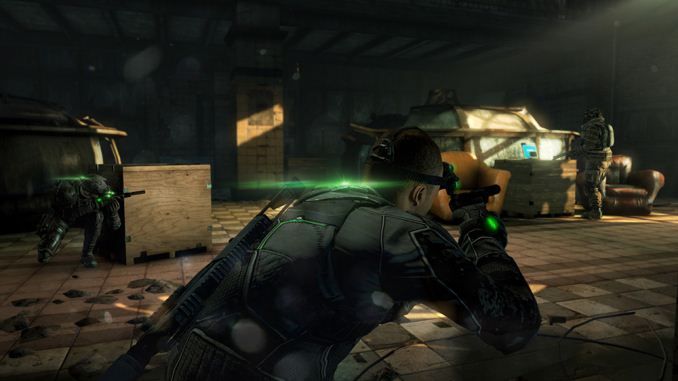
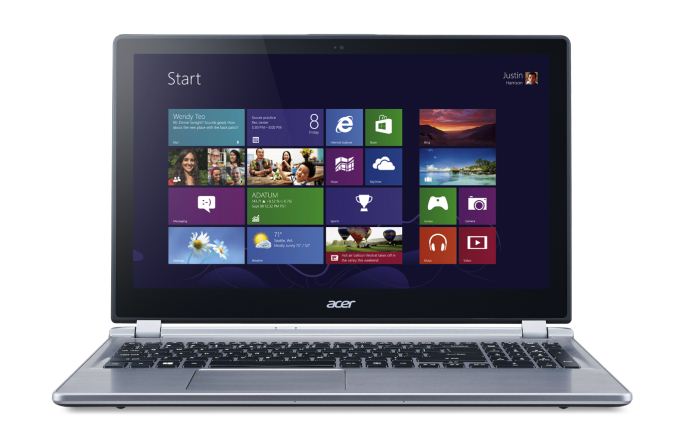
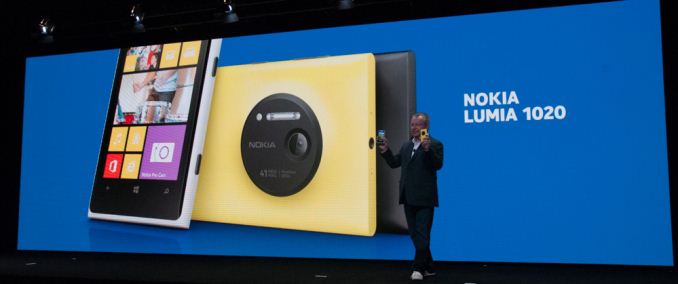
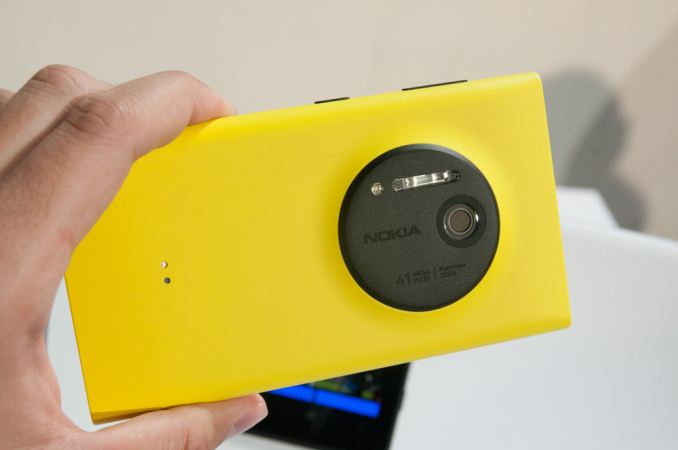

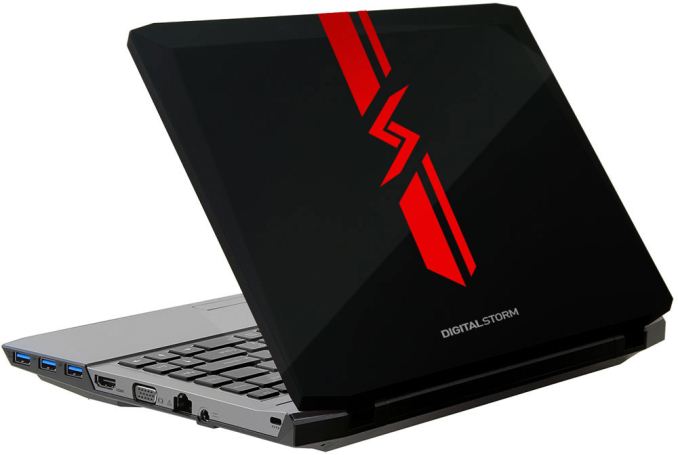
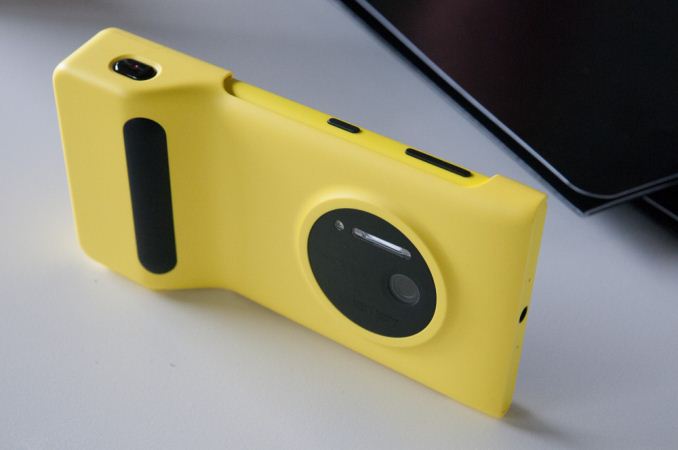
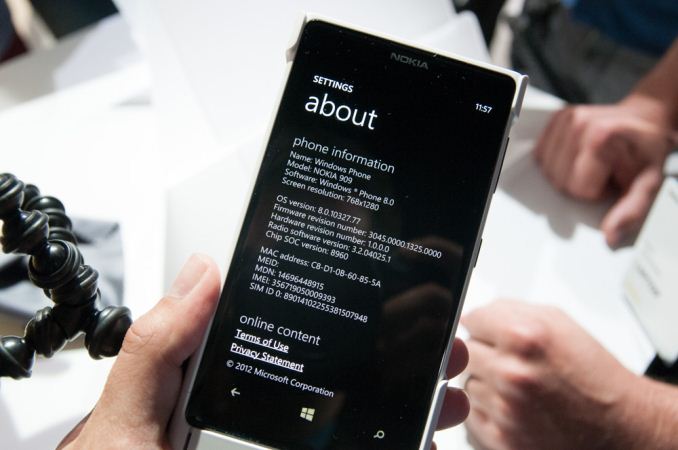
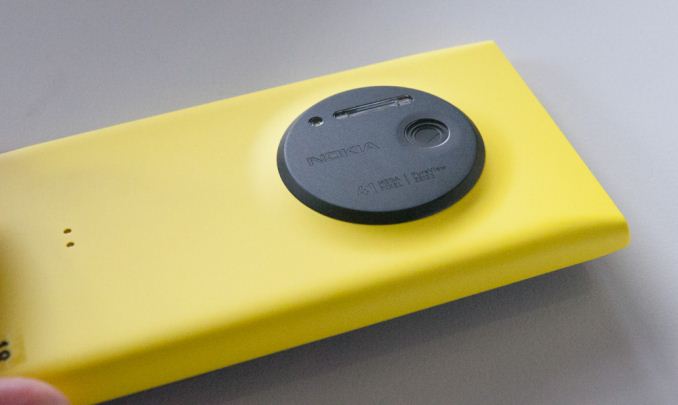
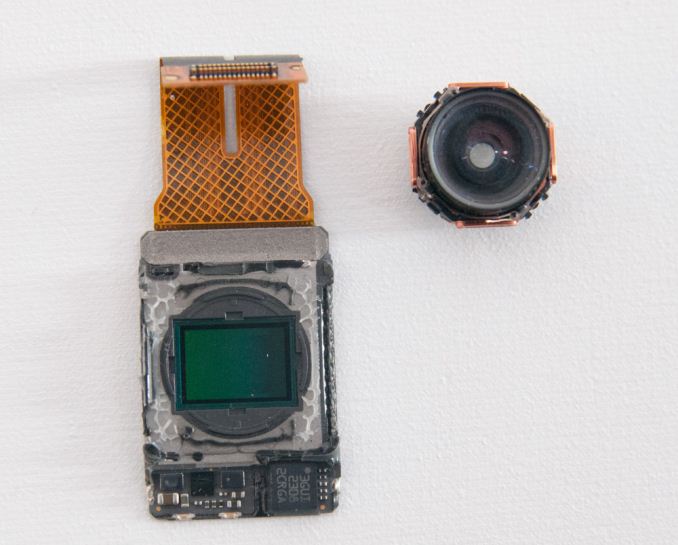
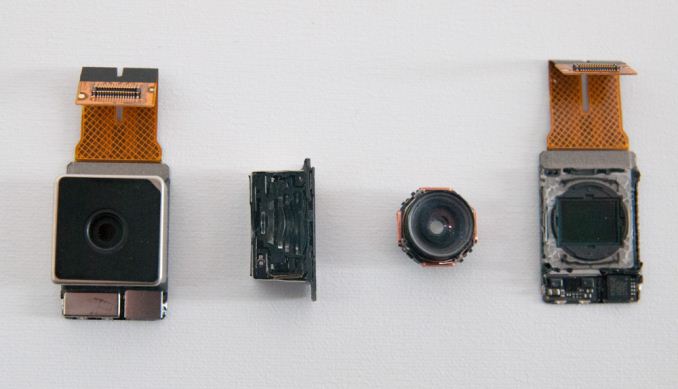
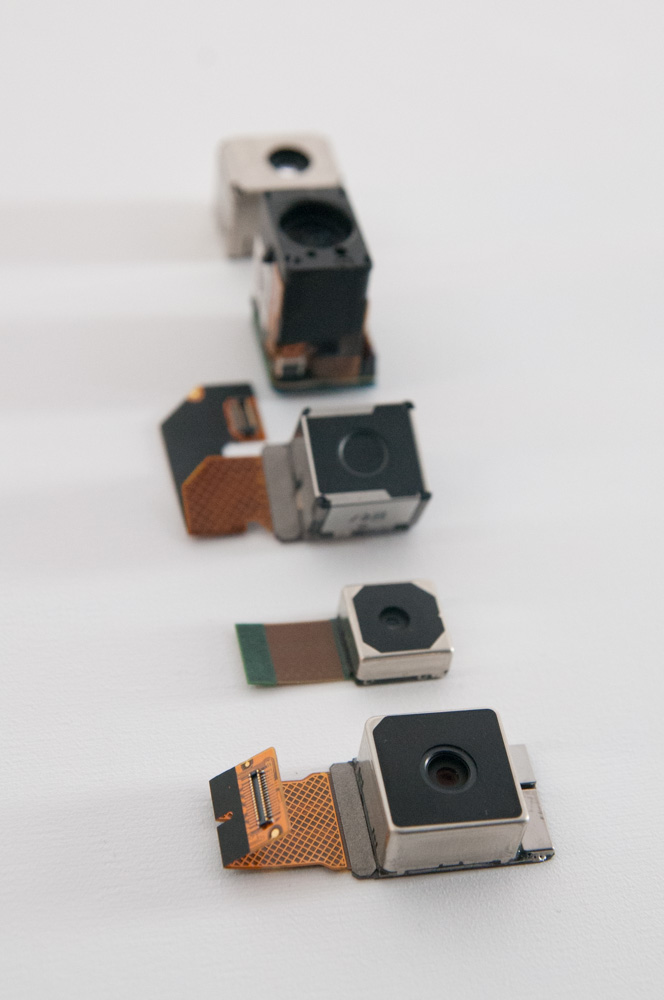
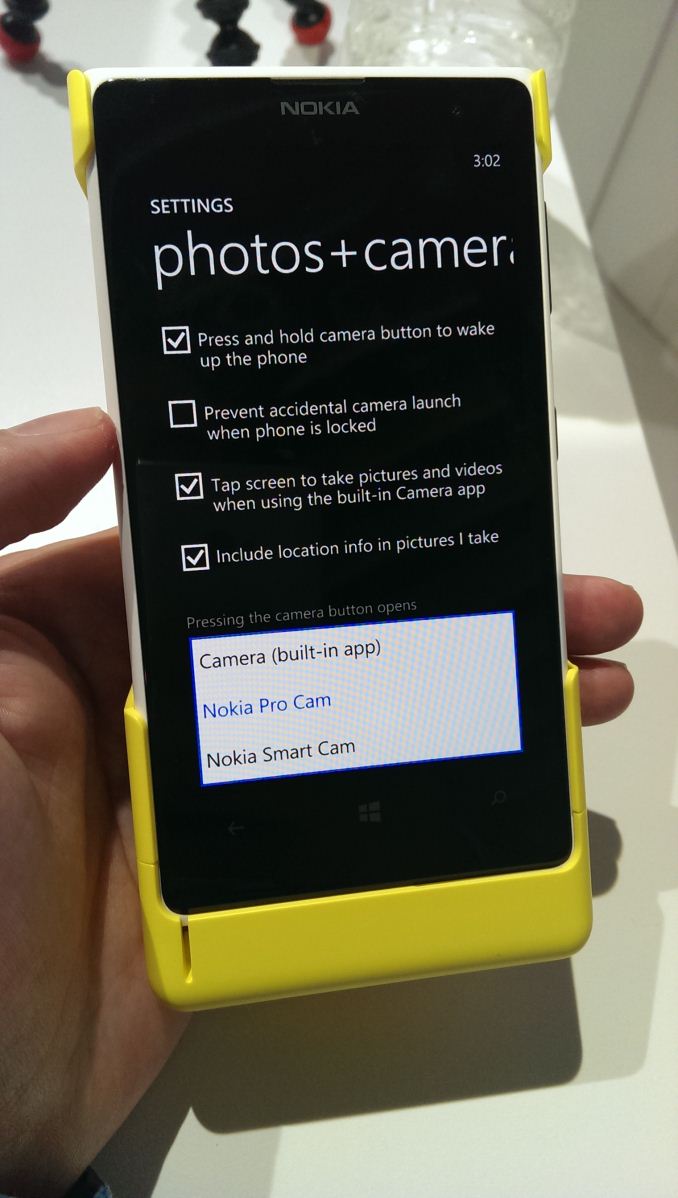
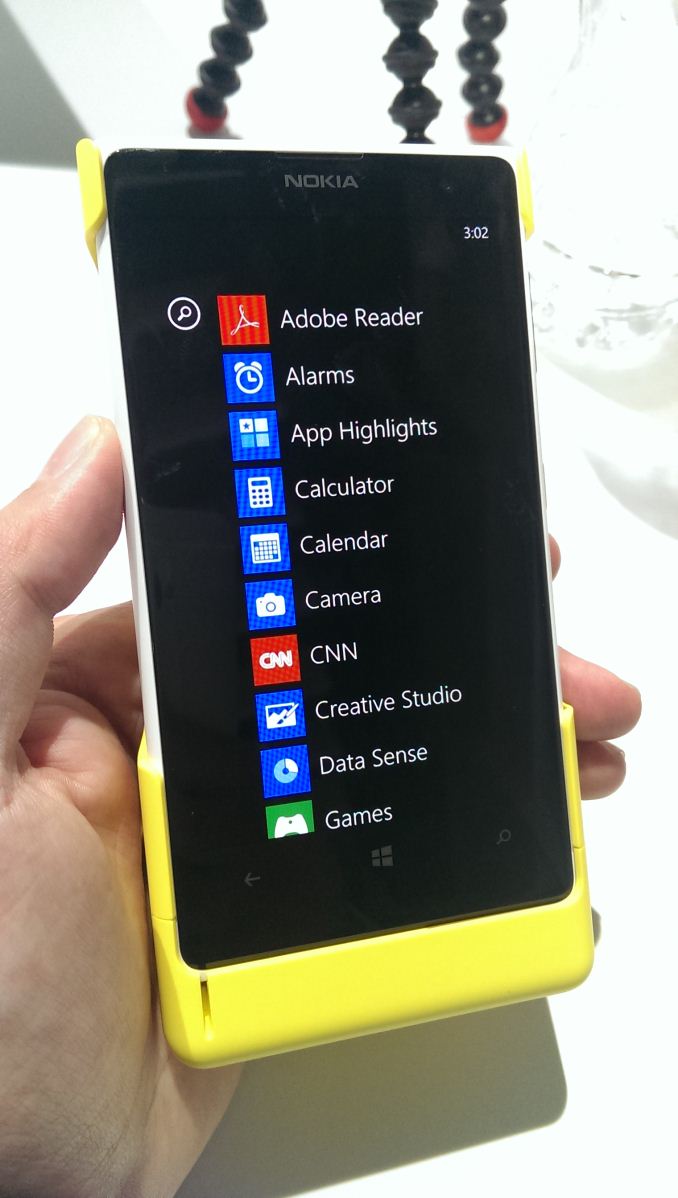
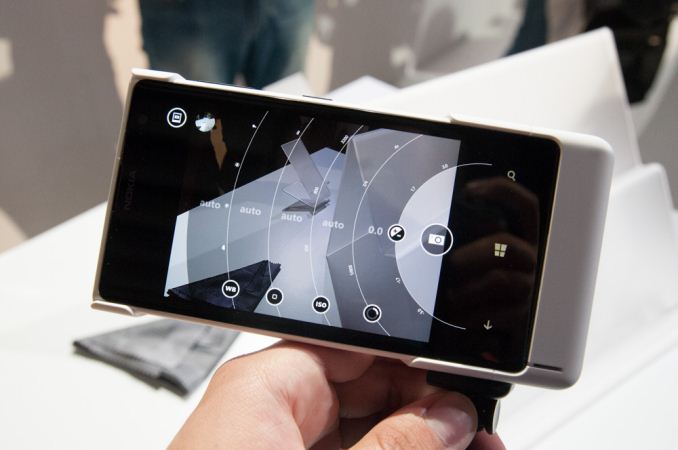
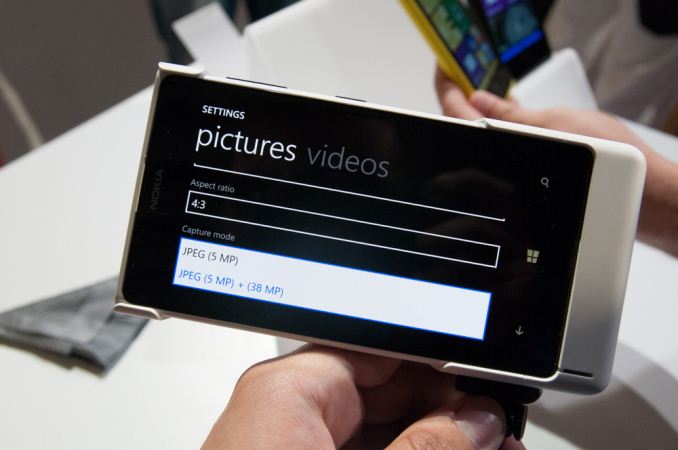
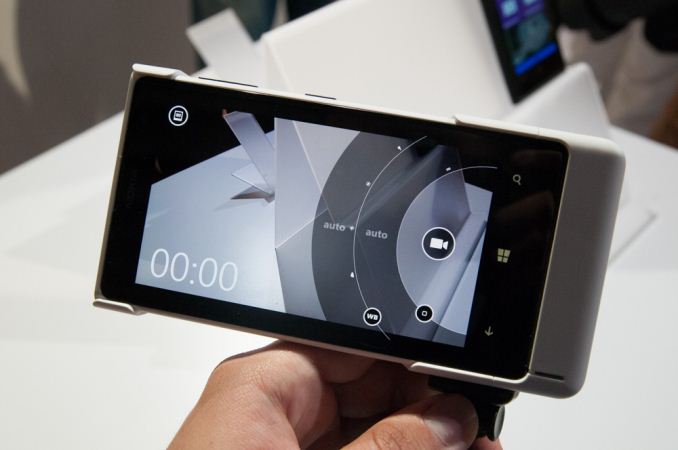
















Bookmarks